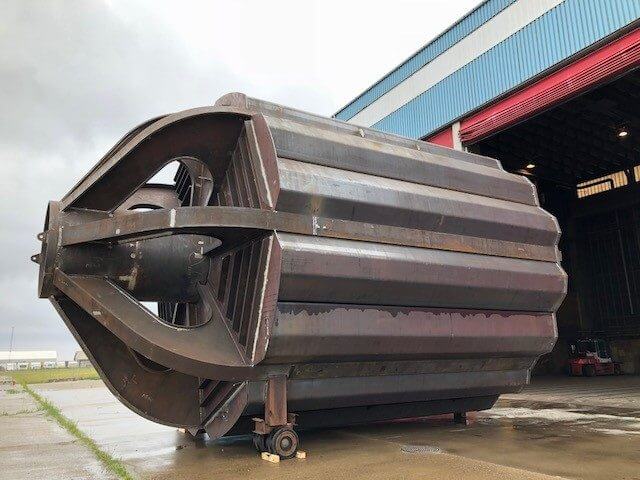One important way marine mammals navigate, forage, and communicate is through sounds. Unexpected or atypical sounds — such as underwater noise from offshore construction activity — is a concern for many wind developers and environmentalists. In our June 2018 issue, the article A quieter way to construct offshore turbine foundations discussed a method for pile driving that replaces the use of loud and disruptive hydraulic hammers (click here for a refresher).

The new “Mono Bucket” combines the key benefits of a gravity-based foundation, a monopile, and a suction bucket. The suction-bucket installation method eliminates the need for pile driving and noise mitigation measures.
A new wind consortium is currently working on another way to reduce underwater construction noise while cutting offshore wind installation costs. Siemens Gamesa and Universal Foundation, both part of the consortium, are working on an industrialized suction-bucked design. Suction buckets have been used in the oil and gas industry for years, and more recently in offshore wind to anchor tower foundations. (Ørsted, formerly DONG Energy, installed the world’s first offshore wind-turbine foundation using suction-bucket technology in 2014.)
The process involves lowering an inverted bucket into the seabed floor and then pumping water out of the bucket to create a negative or vacuum-like pressure. As a result of the pressure, the tower foundation gradually sinks into the seabed floor — without the need for loud or disruptive drilling.
“This project is interesting in many ways,” said Søren Andreas Nielsen, Head of R&D, Universal Foundation, in a recent press statement. “We all share the view that suction technology provides some obvious installation advantages, both in terms of environmental impact and costs.”
The benefits of a suction-bucket design include little to zero seabed prep, a noise-free installation process (that’s also quicker than conventional methods, such as pile driving), and easier decommissioning. The ultimate goal of the consortium is to decrease foundation construction and installation cost by 40%.
The partnership between Siemens Gamesa and Universal Foundation builds on an earlier project the companies worked on to develop an 8×8-meter suction-bucket prototype. The second part of this work will see the prototype used in an offshore trial. According to the companies, the new concept merges the noise-free installation advantages of suction buckets with industrialized fabrication methods that use coil steel instead of conventional plate steel.
“By applying this innovative fabrication method to suction-bucket technology in offshore wind, the steel plate thickness can be reduced to below 20mm, compared to today’s typical thickness of 30 or 40mm for this type of foundation,” said Finn Daugaard Madsen, Project Manager with Siemens Gamesa. “This means the use of lower cost steel with higher supply availability.”
The aim is to develop an industrial-scale suction bucket that’s commercially ready for new offshore wind farms. “During part two of the project, we are eager to prove the installation integrity and reliability of the system,” added Daugaard Madsen
Filed Under: Construction, News, Offshore wind, Projects




